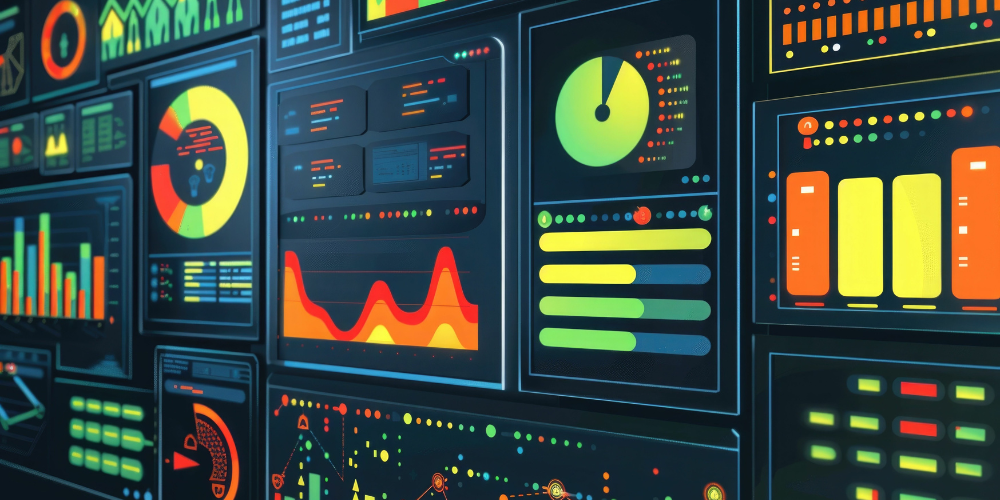
Human Resources (HR) is no longer just about hiring and payroll—it’s about leveraging data to make strategic decisions that drive workforce efficiency and engagement. Microsoft Power BI is revolutionizing HR analytics by enabling professionals to analyze employee data, track key HR metrics, and gain actionable insights. If you’re looking to master Power BI for HR analytics, this guide will help you understand its importance and how it can transform your HR decision-making.
Why Use Power BI for HR Analytics?
HR departments generate vast amounts of data, from employee performance metrics to recruitment trends and retention rates. Power BI allows HR professionals to consolidate this data into interactive dashboards, making it easier to identify trends, improve decision-making, and enhance employee experiences.
Key HR Metrics to Analyze with Power BI
1. Employee Performance & Productivity
Power BI enables HR teams to track key performance indicators (KPIs) such as individual productivity, team performance, and goal achievements. With visual dashboards, HR leaders can assess strengths and areas needing improvement.
2. Employee Retention & Turnover Rate
By analyzing historical data, HR professionals can identify turnover trends and reasons why employees leave. Power BI’s predictive analytics can also help forecast potential attrition and implement retention strategies.
3. Recruitment & Hiring Analytics
HR teams can measure the effectiveness of their recruitment process by tracking time-to-hire, cost-per-hire, and candidate sources. Power BI helps visualize which hiring channels bring in the best talent, enabling data-driven recruitment decisions.
4. Employee Engagement & Satisfaction
Survey results and feedback can be analyzed in Power BI to understand employee sentiment. By identifying trends in employee engagement, HR can take proactive steps to enhance workplace satisfaction and productivity.
5. Employee Engagement & Satisfaction
Power BI allows HR teams to track employee training progress, measure skill development, and assess the impact of training programs on overall performance. This ensures continuous learning and career growth.
Conclusion
Microsoft Power BI is a game-changer for HR analytics, enabling HR professionals to turn raw data into meaningful insights. By mastering Power BI, HR teams can make data-driven decisions that improve employee satisfaction, streamline HR operations, and enhance workforce efficiency. Invest in Power BI training today to unlock the full potential of HR analytics!
This Article is Uploaded by: Gokul K
Keywords: Power BI HR analytics, Power BI for HR professionals, Power BI employee data analysis, Power BI workforce analytics, Power BI human resources reporting, Power BI HR dashboards, Power BI employee performance tracking, Power BI HR KPIs, Power BI HR metrics, Power BI HR data visualization, Power BI for recruitment analytics, Power BI hiring trends analysis, Power BI talent management, Power BI workforce planning, Power BI HR data insights, Power BI payroll analytics, Power BI compensation analysis, Power BI employee attrition analysis, Power BI turnover rate analysis, Power BI employee engagement tracking, Power BI HR compliance reporting, Power BI diversity and inclusion analytics, Power BI employee satisfaction surveys, Power BI HR predictive analytics, Power BI attendance tracking, Power BI workforce productivity analysis, Power BI learning and development analytics, Power BI employee training effectiveness, Power BI workforce demographics, Power BI HR benchmarking, Power BI internal mobility tracking, Power BI benefits administration analysis, Power BI performance appraisal tracking, Power BI career progression analytics, Power BI HR decision-making, Power BI people analytics, Power BI succession planning, Power BI talent retention strategies, Power BI workforce efficiency, Power BI HR automation, Power BI AI in HR analytics, Power BI recruitment funnel analysis, Power BI workforce diversity metrics, Power BI HR cost analysis, Power BI employee wellbeing analytics, Power BI HR business intelligence, Power BI organizational health analytics, Power BI human capital management, Power BI HR strategy insights, Power BI employee sentiment analysis, Power BI workplace productivity, Power BI workforce forecasting, Power BI HR operational efficiency, Power BI compensation benchmarking, Power BI team performance tracking, Power BI workplace analytics, Power BI remote work analytics, Power BI skills gap analysis, Power BI HR self-service dashboards, Power BI leadership development tracking, Power BI onboarding analytics, Power BI employee net promoter score (eNPS), Power BI performance improvement tracking, Power BI retention risk assessment, Power BI hiring pipeline visualization, Power BI HR executive reporting, Power BI workforce utilization metrics, Power BI labor cost optimization, Power BI HR compliance audits, Power BI turnover trend forecasting, Power BI employee feedback analytics, Power BI HR expense tracking, Power BI remote workforce analytics, Power BI HR case management, Power BI organizational structure analysis, Power BI strategic workforce planning, Power BI cross-functional HR analytics, Power BI workplace culture tracking, Power BI HR goal setting, Power BI compensation and benefits reporting, Power BI employee success metrics, Power BI leadership effectiveness tracking, Power BI learning management analytics, Power BI job satisfaction reporting, Power BI absenteeism tracking, Power BI AI-powered HR insights, Power BI HR fraud detection, Power BI human resources optimization, Power BI labor law compliance reporting, Power BI employee health and wellness insights, Power BI competency mapping, Power BI professional development analytics, Power BI internal promotions tracking, Power BI hiring source effectiveness, Power BI HR trends reporting, Power BI workforce sustainability analytics, Power BI HR audit reporting, Power BI AI-driven workforce insights, Power BI corporate HR analytics, Power BI talent acquisition reporting.

Leave Your Comment Here